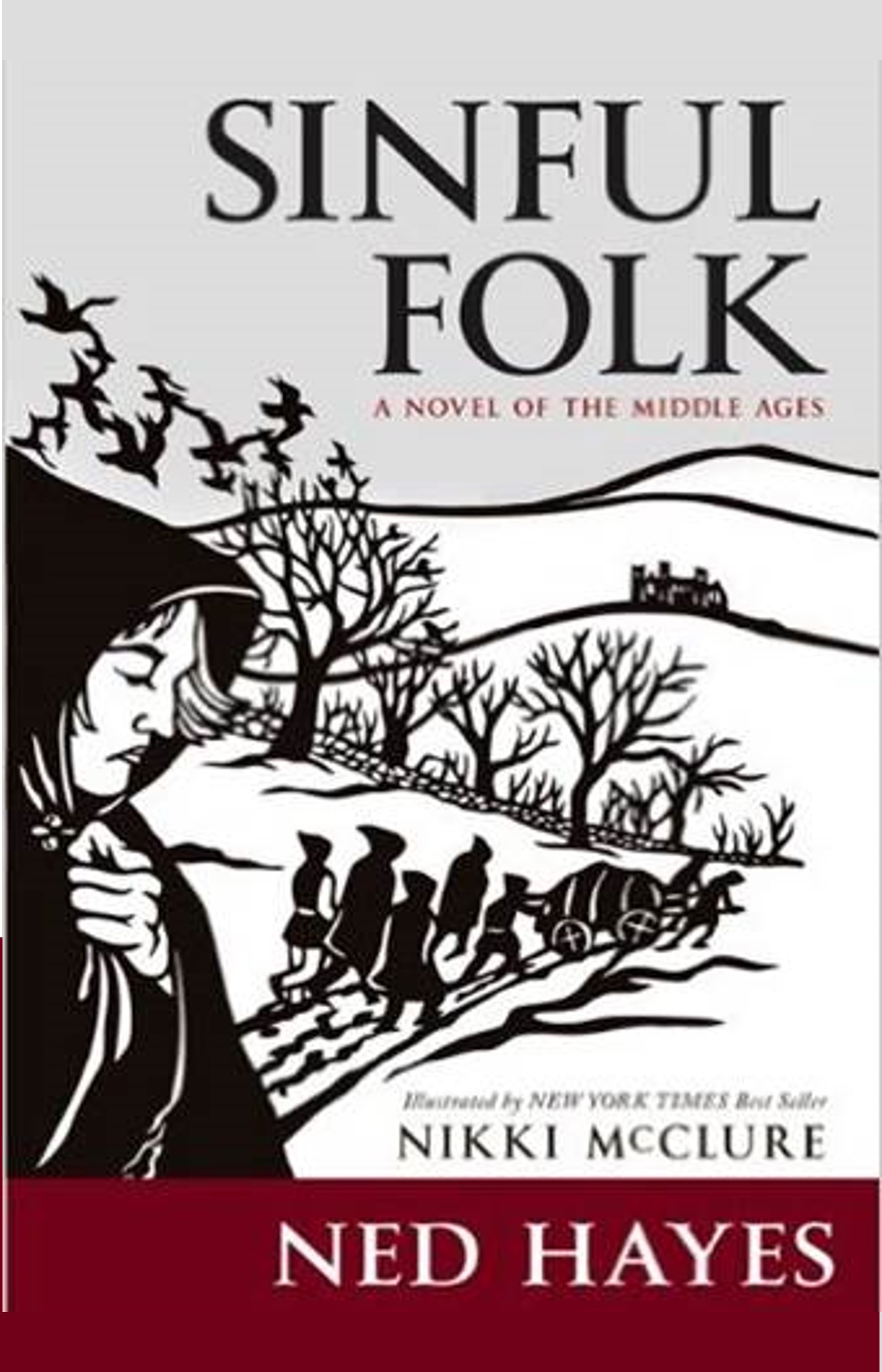
Read my books at Shakespeare & Co.
Read more BOOKSTORE POSTS
One year ago, I had the distinct pleasure of visiting perhaps the most famous independent bookstore in the world with my daughter. Shakespeare and Company is the marvelous English-language bookshop in the heart of Paris, on the banks of the Seine, opposite Notre-Dame. Since opening in 1951, this store has been a meeting place for anglophone writers and readers, becoming a Left Bank literary institution. This lovely bookstore bookstore has been an oasis for generations of writers, including Allen Ginsberg, Henry Miller, Anaïs Nin, William Styron, Martin Amis, Zadie Smith, Dave Eggers and a myriad number of other “tumbleweed” writers who have lodged here, read here, and written here in this English-language literary oasis. 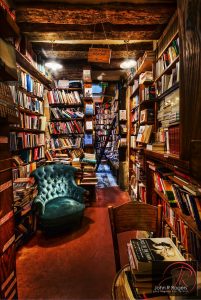
The bookstore is full of legends and stories about itself. To start with, its scavenged floorings include marble tiling that founder George Whitman stole decades ago from Montparnasse Cemetery and laid down in an abstract mosaic around the store’s “wishing well” — a hole in which customers toss coins to be harvested by poor writers who may need change for a cheap room in Paris. The wishing well also had a gas main that ran into it, and sometimes George would turn it on, and throw a lit match in, just for the excitement (and he once burned the hair off a visiting model with this trick. The model said she never received a proper apology.)
Writers often camped out in Shakespeare and Company overnight, and found themselves shanghaied into helping out with book sales and with (occasionally) babysitting the proprietor’s daughter Sylvia (who now runs the bookstore herself). It is also true that George once kicked Johnny Deep out of the bookstore (for refusing the generous offer of a bed for the night — George enjoyed entertainment in books, not in movies or TV, so he may not have known who Johnny Depp was at all). It’s also worth nothing that the building was originally a monastery — La Maison du Mustier. George liked to pretend he was the sole surviving monk, saying, “In the Middle Ages, each monastery had a frère lampier, a monk whose duty was to light the lamps at nightfall. I’m the frère lampier here now. It’s the modest role I play.”
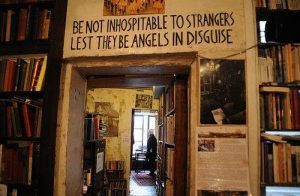 Some of the legends, however, are not true. For example, James Joyce is sadly not buried in the cellar (he is buried in Zurich). And it is also not true that George once stocked the wishing well with live seals (he wanted to do so, but never succeeded in getting the permits).
Some of the legends, however, are not true. For example, James Joyce is sadly not buried in the cellar (he is buried in Zurich). And it is also not true that George once stocked the wishing well with live seals (he wanted to do so, but never succeeded in getting the permits).
And there’s one more note to make about the history. This is the second version of a bookstore called Shakespeare and Company based in Paris. Sylvia Beach founded the original Shakespeare and Company in 1919. Her store at 12 rue de l’Odéon was a gathering place for the great expat writers of the 1920s and 1930s — Joyce, Hemingway, Stein, Fitzgerald, Eliot, Pound — as well as for leading French writers. In fact, James Joyce’s Ulysses was first published in its complete form by Beach because the government authorities in Britain and America deemed it obscene. Sadly, Beach closed up shop during the Nazi occupation in 1940 and never reopened.
When George’s store first opened in 1951, it was called Le Mistral. George changed it to the name Shakespeare and Company in April 1964—on the four-hundredth anniversary of William Shakespeare’s birth. Perhaps he had Beach’s blessing in this… perhaps he did not… the line between fiction and nonfiction was never quite clear, as with many stories told by the inimitable George Whitman.
Epigrams on the Walls of the Bookstore
LIVE FOR HUMANITY
FEED THE STARVING WRITERS
BE NOT INHOSPITABLE TO STRANGERS LEST THEY BE ANGELS IN DISGUISE
OLD SMOKY READING ROOM and BLUE OYSTER TEAROOM
From the first day George’s version of Shakespeare and Company opened, writers, artists, and intellectuals were invited to sleep among the shop’s shelves and piles of books, on small beds that doubled as benches during the day. Since then, the bookstore’s website notes that an estimated 30,000 young and young-at-heart writers and artists have stayed in the bookshop, including then unknowns such as Alan Sillitoe, Robert Stone, Kate Grenville, Sebastian Barry, Ethan Hawke, Jeet Thayil, Darren Aronfsky, Geoffrey Rush, and David Rakoff. These guests are called Tumbleweeds after the rolling thistles that “drift in and out with the winds of chance,” as George described.
I created this bookstore like a man would write a novel, building each room like a chapter, and I like people to open the door the way they open a book, a book that leads into a magic world in their imaginations.
-— George Whitman
In 2002, at the age of twenty-one, Sylvia Whitman, George’s only child, returned to Shakespeare and Company to spend time with her father, then eighty-eight years old, in his kingdom of books. In 2006, George officially put Sylvia in charge.
Sylvia introduced several new literary endeavors. In June 2003, Shakespeare and Company hosted its first literary festival, followed by three others. Participants over the years have included Paul Auster, Will Self, Marjane Satrapi, Jung Chang, Philip Pullman, Hanif Kureishi, Siri Hustvedt, Martin Amis, and Alistair Horne, among many others.
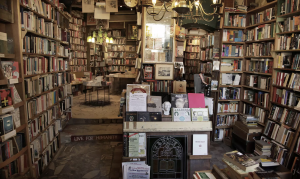 Although George Whitman passed away on December 14, 2011—two days after his 98th birthday—his novel, this bookshop, is still being written, both by Sylvia and by the thousands of people who continue to read, write, and sleep at Shakespeare and Company.
Although George Whitman passed away on December 14, 2011—two days after his 98th birthday—his novel, this bookshop, is still being written, both by Sylvia and by the thousands of people who continue to read, write, and sleep at Shakespeare and Company.
Sylvia recently published a new book: Shakespeare and Company, Paris: A History of the Rag & Bone Shop of the Heart. This 400-page book, the first ever about the shop’s history, features more than 300 images—including photographs, rare materials from the shop’s archive—and 70 editorial contributions from writers such as Allen Ginsberg, Anaïs Nin, Kate Tempest, Ethan Hawke, and Jeanette Winterson.
Shakespeare and Company is one of my literary touchstones, and I invite you to read my books at this amazing bookstore.
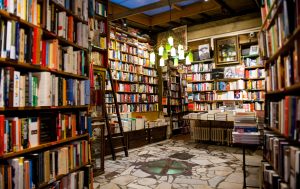
Epigram Written by George on the Wall When He Retired
INSTEAD OF BEING A BONAFIDE BOOKSELLER I AM MORE LIKE A FRUSTRATED NOVELIST. THIS STORE HAS ROOMS LIKE CHAPTERS IN A NOVEL AND THE FACT IS TOLSTOI AND DOSTOYEVSKY ARE MORE REAL TO ME THAN MY NEXT DOOR NEIGHBORS…. IN THE YEAR 1600, OUR WHOLE BUILDING WAS A MONASTERY CALLED ‘LA MAISON DU MUSTIER.’ IN MEDIEVAL TIMES EACH MONASTERY HAD A FRERE LAMPIER WHOSE DUTY WAS TO LIGHT THE LAMPS AT NIGHTFALL. I HAVE BEEN DOING THIS FOR FIFTY YEARS NOW IT IS MY DAUGHTER’S TURN.
— GEORGE WHITMAN
Pinterest – Ned Hayes Bookstore Board


